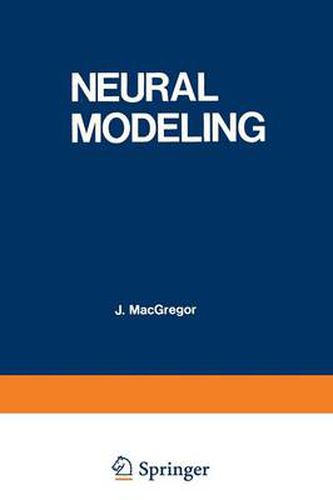Readings Newsletter
Become a Readings Member to make your shopping experience even easier.
Sign in or sign up for free!
You’re not far away from qualifying for FREE standard shipping within Australia
You’ve qualified for FREE standard shipping within Australia
The cart is loading…






This title is printed to order. This book may have been self-published. If so, we cannot guarantee the quality of the content. In the main most books will have gone through the editing process however some may not. We therefore suggest that you be aware of this before ordering this book. If in doubt check either the author or publisher’s details as we are unable to accept any returns unless they are faulty. Please contact us if you have any questions.
The purpose of this book is to introduce and survey the various quantitative methods which have been proposed for describing, simulating, embodying, or characterizing the processing of electrical signals in nervous systems. We believe that electrical signal processing is a vital determinant of the functional organization of the brain, and that in unraveling the inherent complexities of this processing it will be essential to utilize the methods of quantification and modeling which have led to crowning successes in the physical and engineering sciences. In comprehensive terms, we conceive neural modeling to be the attempt to relate, in nervous systems, function to structure on the basis of operation. Sufficient knowledge and appropriate tools are at hand to maintain a serious and thorough study in the area. However, work in the area has yet to be satisfactorily integrated within contemporary brain research. Moreover, there exists a good deal of inefficiency within the area resulting from an overall lack of direction, critical self-evaluation, and cohesion. Such theoretical and modeling studies as have appeared exist largely as fragmented islands in the literature or as sparsely attended sessions at neuroscience conferences. In writing this book, we were guided by three main immediate objectives. Our first objective is to introduce the area to the upcoming generation of students of both the hard sciences and psychological and biological sciences in the hope that they might eventually help bring about the contributions it promises.
$9.00 standard shipping within Australia
FREE standard shipping within Australia for orders over $100.00
Express & International shipping calculated at checkout
This title is printed to order. This book may have been self-published. If so, we cannot guarantee the quality of the content. In the main most books will have gone through the editing process however some may not. We therefore suggest that you be aware of this before ordering this book. If in doubt check either the author or publisher’s details as we are unable to accept any returns unless they are faulty. Please contact us if you have any questions.
The purpose of this book is to introduce and survey the various quantitative methods which have been proposed for describing, simulating, embodying, or characterizing the processing of electrical signals in nervous systems. We believe that electrical signal processing is a vital determinant of the functional organization of the brain, and that in unraveling the inherent complexities of this processing it will be essential to utilize the methods of quantification and modeling which have led to crowning successes in the physical and engineering sciences. In comprehensive terms, we conceive neural modeling to be the attempt to relate, in nervous systems, function to structure on the basis of operation. Sufficient knowledge and appropriate tools are at hand to maintain a serious and thorough study in the area. However, work in the area has yet to be satisfactorily integrated within contemporary brain research. Moreover, there exists a good deal of inefficiency within the area resulting from an overall lack of direction, critical self-evaluation, and cohesion. Such theoretical and modeling studies as have appeared exist largely as fragmented islands in the literature or as sparsely attended sessions at neuroscience conferences. In writing this book, we were guided by three main immediate objectives. Our first objective is to introduce the area to the upcoming generation of students of both the hard sciences and psychological and biological sciences in the hope that they might eventually help bring about the contributions it promises.